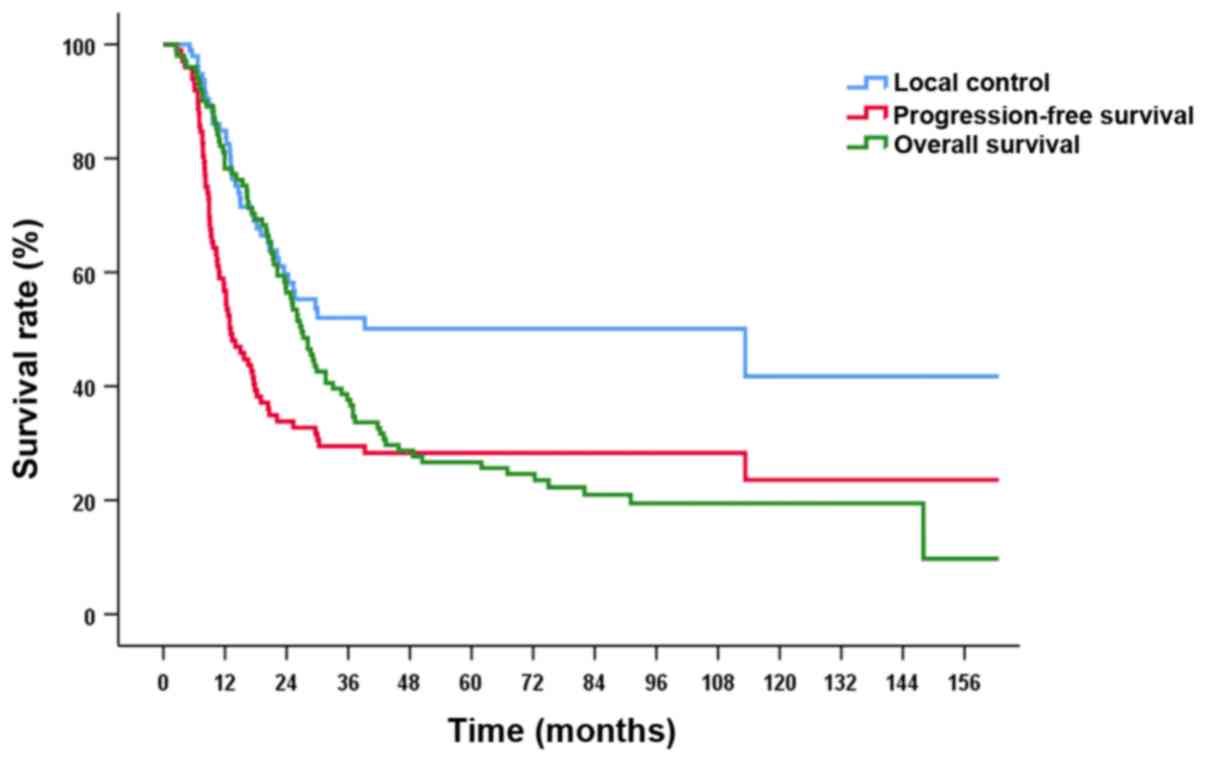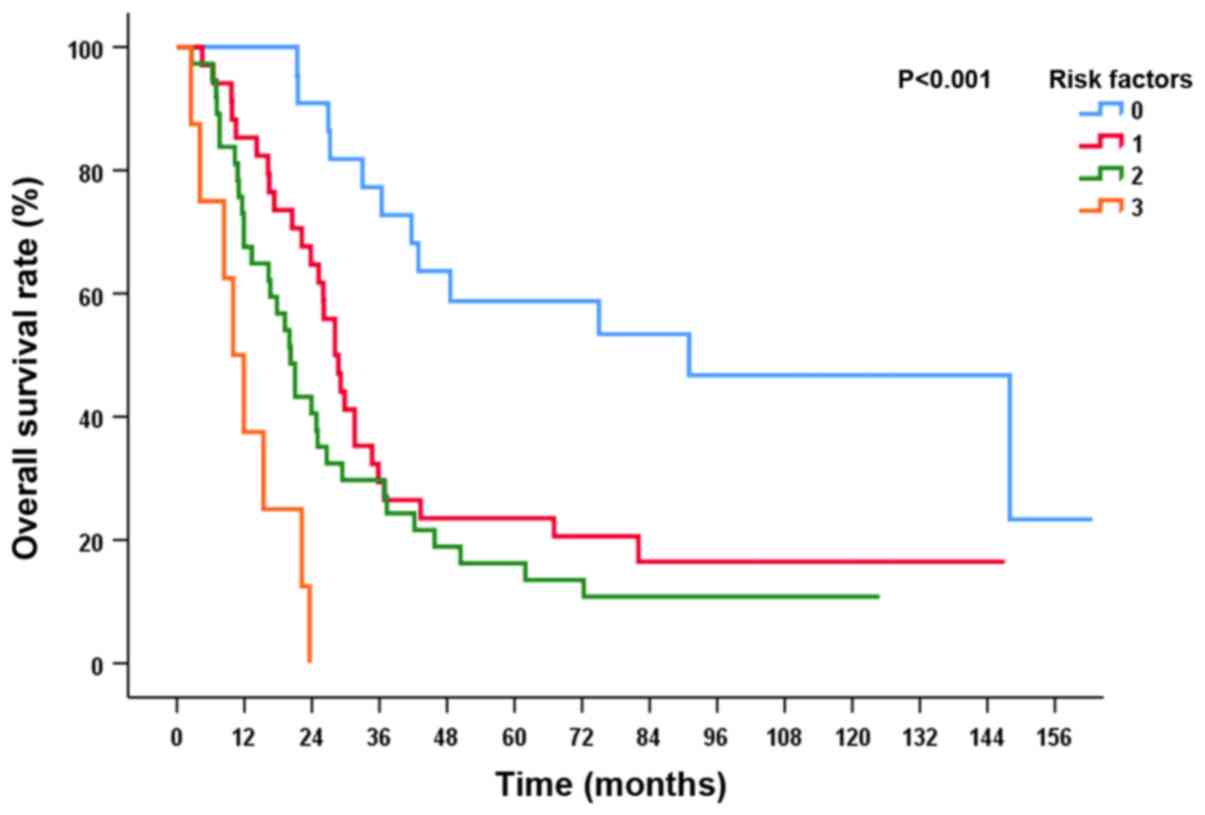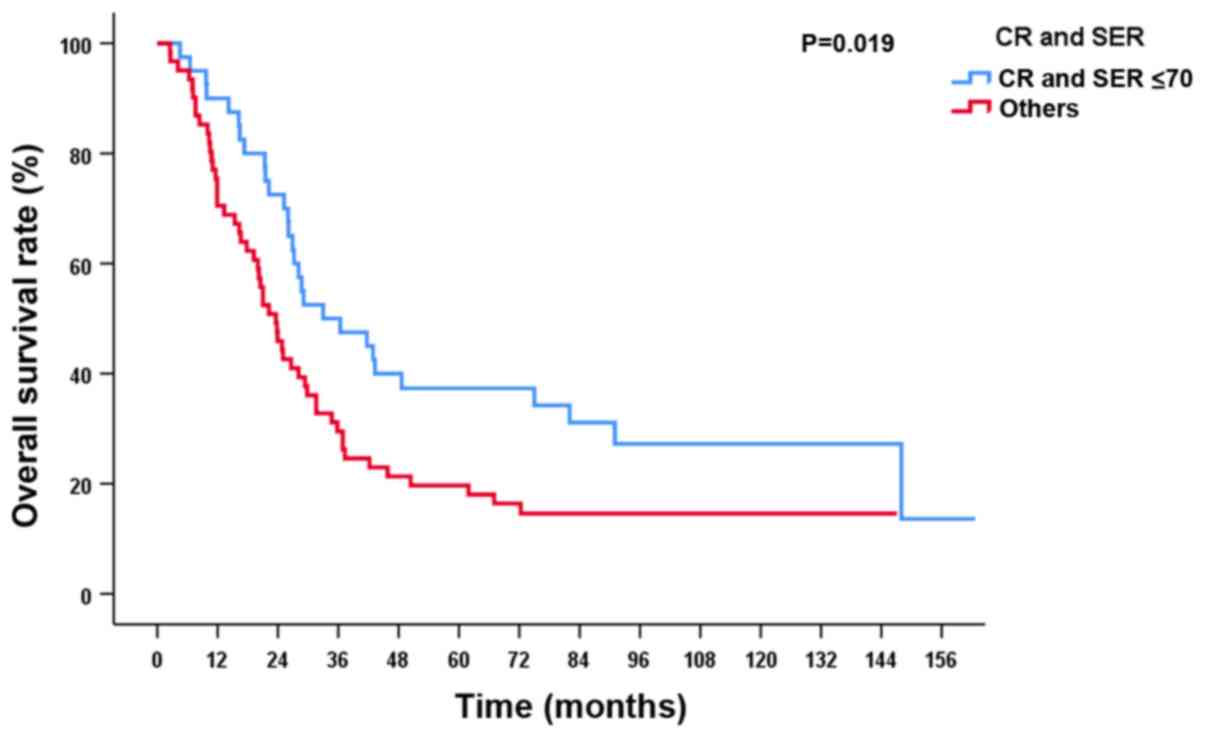|
1
|
Rich AL, Tata LJ, Stanley RA, Free CM,
Peake MD, Baldwin DR and Hubbard RB: Lung cancer in England:
Information from the National Lung Cancer Audit (LUCADA). Lung
Cancer. 72:16–22. 2011. View Article : Google Scholar : PubMed/NCBI
|
|
2
|
Pignon JP, Arriagada R, Ihde DC, Johnson
DH, Perry MC, Souhami RL, Brodin O, Joss RA, Kies MS, Lebeau B, et
al: A meta-analysis of thoracic radiotherapy for small-cell lung
cancer. N Engl J Med. 327:1618–1624. 1992. View Article : Google Scholar : PubMed/NCBI
|
|
3
|
Takada M, Fukuoka M, Kawahara M, Sugiura
T, Yokoyama A, Yokota S, Nishiwaki Y, Watanabe K, Noda K, Tamura T,
et al: Phase III study of concurrent versus sequential thoracic
radiotherapy in combination with cisplatin and etoposide for
limited-stage small-cell lung cancer: Results of the Japan Clinical
Oncology Group Study 9104. J Clin Oncol. 20:3054–3060. 2002.
View Article : Google Scholar : PubMed/NCBI
|
|
4
|
Huncharek M and McGarry R: A meta-analysis
of the timing of chest irradiation in the combined modality
treatment of limited-stage small cell lung cancer. Oncologist.
9:665–672. 2004. View Article : Google Scholar : PubMed/NCBI
|
|
5
|
Fried DB, Morris DE, Poole C, Rosenman JG,
Halle JS, Detterbeck FC, Hensing TA and Socinski MA: Systematic
review evaluating the timing of thoracic radiation therapy in
combined modality therapy for limited-stage small-cell lung cancer.
J Clin Oncol. 22:4837–4845. 2004. View Article : Google Scholar : PubMed/NCBI
|
|
6
|
Schild SE, Bonner JA, Shanahan TG, Brooks
BJ, Marks RS, Geyer SM, Hillman SL, Farr GH Jr, Tazelaar HD, Krook
JE, et al: Long-term results of a phase III trial comparing
once-daily radiotherapy with twice-daily radiotherapy in
limited-stage small-cell lung cancer. Int J Radiat Oncol Biol Phys.
59:943–951. 2004. View Article : Google Scholar : PubMed/NCBI
|
|
7
|
Bogart JA, Herndon JE II, Lyss AP, Watson
D, Miller AA, Lee ME, Turrisi AT and Green MR; Cancer and Leukemia
Group B study 39808, : 70 Gy thoracic radiotherapy is feasible
concurrent with chemotherapy for limited-stage small-cell lung
cancer: Analysis of Cancer and Leukemia Group B study 39808. Int J
Radiat Oncol Biol Phys. 59:460–468. 2004. View Article : Google Scholar : PubMed/NCBI
|
|
8
|
Salama JK, Hodgson L, Pang H, Urbanic JJ,
Blackstock AW, Schild SE, Crawford J, Bogart JA and Vokes EE: A
pooled analysis of limited-stage small-cell lung cancer patients
treated with induction chemotherapy followed by concurrent
platinum-based chemotherapy and 70 Gy daily radiotherapy: CALGB
30904. J Thorac Oncol. 8:1043–1049. 2013. View Article : Google Scholar : PubMed/NCBI
|
|
9
|
Turrisi AT III, Kim K, Blum R, Sause WT,
Livingston RB, Komaki R, Wagner H, Aisner S and Johnson DH:
Twice-daily compared with once-daily thoracic radiotherapy in
limited small-cell lung cancer treated concurrently with cisplatin
and etoposide. N Engl J Med. 340:265–271. 1999. View Article : Google Scholar : PubMed/NCBI
|
|
10
|
Faivre-Finn C, Snee M, Ashcroft L, Appel
W, Barlesi F, Bhatnagar A, Bezjak A, Cardenal F, Fournel P, Harden
S, et al: Concurrent once-daily versus twice-daily
chemoradiotherapy in patients with limited-stage small-cell lung
cancer (CONVERT): An open-label, phase 3, randomised, superiority
trial. Lancet Oncol. 18:1116–1125. 2017. View Article : Google Scholar : PubMed/NCBI
|
|
11
|
Diwanji TP, Mohindra P, Vyfhuis M, Snider
JW III, Kalavagunta C, Mossahebi S, Yu J, Feigenberg S and Badiyan
SN: Advances in radiotherapy techniques and delivery for non-small
cell lung cancer: Benefits of intensity-modulated radiation
therapy, proton therapy, and stereotactic body radiation therapy.
Transl Lung Cancer Res. 6:131–147. 2017. View Article : Google Scholar : PubMed/NCBI
|
|
12
|
De Ruysscher D, Lueza B, Le Péchoux C,
Johnson DH, O'Brien M, Murray N, Spiro S, Wang X, Takada M, Lebeau
B, et al: Impact of thoracic radiotherapy timing in limited-stage
small-cell lung cancer: Usefulness of the individual patient data
meta-analysis. Ann Oncol. 27:1818–1828. 2016. View Article : Google Scholar : PubMed/NCBI
|
|
13
|
Zhu L, Zhang S, Xu X, Wang B, Wu K, Deng
Q, Xia B and Ma S: Increased biological effective dose of radiation
correlates with prolonged survival of patients with limited-stage
small cell lung cancer: A systematic review. PLoS One.
11:e01564942016. View Article : Google Scholar : PubMed/NCBI
|
|
14
|
Edge SB and Compton CC: The American Joint
Committee on Cancer: The 7th edition of the AJCC cancer staging
manual and the future of TNM. Ann Surg Oncol. 17:1471–1474. 2010.
View Article : Google Scholar : PubMed/NCBI
|
|
15
|
Eisenhauer EA, Therasse P, Bogaerts J,
Schwartz LH, Sargent D, Ford R, Dancey J, Arbuck S, Gwyther S,
Mooney M, et al: New response evaluation criteria in solid tumours:
Revised RECIST guideline (version 1.1). Eur J Cancer. 45:228–2247.
2009. View Article : Google Scholar : PubMed/NCBI
|
|
16
|
Xia B, Chen GY, Cai XW, Zhao JD, Yang HJ,
Fan M, Zhao KL and Fu XL: The effect of bioequivalent radiation
dose on survival of patients with limited-stage small-cell lung
cancer. Radiat Oncol. 6:502011. View Article : Google Scholar : PubMed/NCBI
|
|
17
|
Bepler G, Jaques G, Neumann K, Aumuller G,
Gropp C and Havemann K: Establishment, growth properties, and
morphological characteristics of permanent human small cell lung
cancer cell lines. J Cancer Res Clin Oncol. 113:31–40. 1987.
View Article : Google Scholar : PubMed/NCBI
|
|
18
|
Common Terminology Criteria for Adverse
Events (CTCAE) Version 4.0. [Cited 2017 Oct 22]. https://evs.nci.nih.gov/ftp1/CTCAE/CTCAE_4.03/Archive/CTCAE_4.0_2009-05-29_QuickReference_8.5×11.pdf
|
|
19
|
De Ruysscher D, Pijls-Johannesma M,
Bentzen SM, Minken A, Wanders R, Lutgens L, Hochstenbag M, Boersma
L, Wouters B, Lammering G, et al: Time between the first day of
chemotherapy and the last day of chest radiation is the most
important predictor of survival in limited-disease small-cell lung
cancer. J Clin Oncol. 24:1057–1063. 2006. View Article : Google Scholar : PubMed/NCBI
|
|
20
|
Videtic GM: The role of radiation therapy
in small cell lung cancer. Curr Oncol Rep. 15:405–410. 2013.
View Article : Google Scholar : PubMed/NCBI
|
|
21
|
Willers H, Azzoli CG, Santivasi WL and Xia
F: Basic mechanisms of therapeutic resistance to radiation and
chemotherapy in lung cancer. Cancer J. 19:200–207. 2013. View Article : Google Scholar : PubMed/NCBI
|
|
22
|
Murray N, Coy P, Pater JL, Hodson I,
Arnold A, Zee BC, Payne D, Kostashuk EC, Evans WK, Dixon P, et al:
Importance of timing for thoracic irradiation in the combined
modality treatment of limited-stage small-cell lung cancer. The
National Cancer Institute of Canada Clinical Trials Group. J Clin
Oncol. 11:336–344. 1993. View Article : Google Scholar : PubMed/NCBI
|
|
23
|
Sun JM, Ahn YC, Choi EK, Ahn MJ, Ahn JS,
Lee SH, Lee DH, Pyo H, Song SY, Jung SH, et al: Phase III trial of
concurrent thoracic radiotherapy with either first- or third-cycle
chemotherapy for limited-disease small-cell lung cancer. Ann Oncol.
24:2088–2092. 2013. View Article : Google Scholar : PubMed/NCBI
|
|
24
|
Manapov F, Niyazi M, Gerum S,
Roengvoraphoj O, Eze C and Li M: Evaluation of the role of
remission status in a heterogeneous limited disease small-cell lung
cancer patient cohort treated with definitive chemoradiotherapy.
BMC Cancer. 16:2162016. View Article : Google Scholar : PubMed/NCBI
|

















